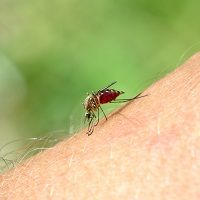Malaria Drug Amodiaquine Improves Blood Vessel Growth in AMD
In animal models, not only did the drug help protect apelin function-deficient models from laser-induced choroidal neovascularization, but it did it through unique mechanisms that were independent of VEGF function.

An old malaria drug may find new life as a treatment for age-related macular degeneration (AMD) and diabetic retinopathy (DR,) according to a recent study.
The drug, amodiaquine, acts on the receptor for apelin—a protein expressed in tissues throughout the body that has impacts on a variety of systems including the vascular system and the brain. Apelin is involved in the growth of blood vessels, and it seems that it may be a cause of problematic blood vessel growth in adulthood.
Traditional therapies for AMD and DR are anti-vascular endothelial growth factor (VEGF) treatments, which prevent blood vessel growth. Unfortunately, up to 30% of patients don’t respond to anti-VEGF therapy and their AMD continues to progress.
Layton Smith, PhD, director, Drug Discovery Florida, and senior author of the paper, and his team had been studying the apelin system for about 15 years, in hopes of understanding its effect on cardiovascular diseases. They’d been screening for molecules that would act as agonists and antagonists to the apelin receptor when they came across amodiaquine.
“Finding amodiaquine, and its application to ophthalmic diseases was purely serendipitous,” Smith said. “We followed the data, and it led us in the right direction.”
The team identified the drug with a high throughput screen. They found that it worked as a non-competitive inhibitor of the apelin system, which is a rare mechanism. Smith was skeptical, and they repeated their experiments multiple times before tentatively moving forward with tests in the animal model to confirm their suspicions that amodiaquine might treat AMD.
“Our collaborators, Dr. Michael Boulton and Dr. Maria Grant (both at University of Alabama at Birmingham, School of Medicine) are experts in the field,” Smith said. “They saw the potential value of repositioning amodiaquine and knew that a mouse model of wet age macular degeneration was the best way to demonstrate this in a preclinical study.”
The results of the study were huge, Smith noted. The compound made a big difference—indicating the team’s breakthrough.
When injected into the mouse’s eye, not only did the drug help protect mice deficient of apelin function from laser-induced choroidal neovascularization, but it did it through unique mechanisms that were independent of VEGF function. It did not impact VEGF, which increases the likelihood that it may be effective in the 30% of patients who don’t respond to anti-VEGF treatments.
Testing for the drug could be expedited, since it has already gone through safety testing for malaria. However, the team also chemically altered the compound to increase safety—if a company wanted to develop a drug from the altered compound, testing might be slower. Smith also suggested the compound could be tested in conjunction with anti-VEGF treatments to boost their efficacy.
Aside from keeping an eye out for the drug as a future treatment for AMD, Smith suggested that ophthalmologists should take note that “our work, along with others, is building a very solid case that apelin and its receptor play a role in this disease.”
The study, "Repurposing antimalarial aminoquinolines and related compounds for treatment of retinal neovascularization," was published online in PLOS ONE.